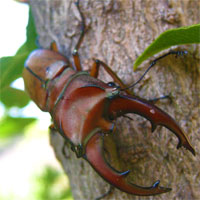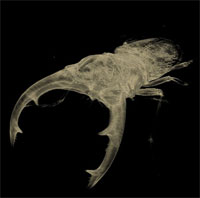We have moved to a new server!
Since March 2014, this website has been moved to this new server: http://web.ntnu.edu.tw/~treehopper/. This page will not be updated anymore. Please update your browser’s bookmark or the web links.
Member list
Current members
- Jo-Fan Wang
- 1. The Territorial Behavior of Euphaea formosa (Odonata). 2. Tempo and Mode of Pronotal Evolution in Membracis Treehoppers.
- Hung-Nien Chen
- 1. The effect of typhoon on survivalship of Matrona cyanoptera. 2. Modes of phenotypic variation in Euphaea amphicyana.
- Lan-Wai Yeh
- Ecology and evolution of Taiwanese Carabus ground beetles.
- Yun-Chieh Cheng
- What do damselfly larvae eat? DNA barcode analyses of larval diet in Matrona cyanoptera and Euphaea formosa.
- Chung-Hsin Huang
- Hui-Yun Tseng
- 1. Biological function of coloration in Pachyrrhynchus tobafolius. 2. Phylogeny and color evolution of Pachyrrhynchus weevils. 3. Population genetics of Pachyrrhynchus weevils on Lanyu and Green Island.
- I-Ting Hsiao
- Variation of genitalia in Euphaea amphicyana.
- Yen-Ting Chen
- The effect of forest management of Mt. Da-Shiue on the morphological variation of a ground beetle, Carabus (Apotomopterus) masuzoi.
- Jyun-Huei Huang
- The fighting behavior of a stag beetle, Rhaetulus crenatus.
- Shi-Ting Wu
- Membracis Phyllotropis.
- Chiao-Wei Lin
- The fighting behavior of a stag beetle, Rhaetulus crenatus.
- Yong-Chao Su
- Behavioral ecology, sociobiology, population genetics, and molecular phylogenetics.
Past members
- Wei-Liang Xiao
- Variation of wing veins in Euphaea amphicyana.
- Li-Wen Weng
- Why do firefly larvae emit light?
- Yat-Hung Lee
- Speciation of Euphaea damselflies.
- Che-Yu Kuan
- Variation of mandibles in stag beetles.
- Chu-Yen Cheng
- Phylogeography of a Philippine's treehopper, Leptocentrus reponens.
- Ming-Yu Chen
- Phylogeography and population history of the treehoppers, Centrochares horifficus from the Philippines Archipelago.
- Shao-Chang Huang
- Visual Communication of Matrona cyanoptera
- Jen-Pan Huang
- Population Genetics and Phylogeographic Analyses of Formosan Damselfly, Euphaea Formosa (Insecta: Odonata: Euphaeidae) from Taiwan
- Wei-Yun Chen
- Molecular and Phylogenetic Characterization of Endosymbiotic Bacteria of the Froghopper, Okiscarta uchidae (Insecta: Hemiptera: Cercopidae)
Visiting scholars and students
- Vanitha Williams
- Predatory potential of waterbug, Diplonychus rusticus and dragonfly, Diplacodes trivialis on mosquito larvae.
- Marina Vilenica
- Dragonfly composition (Insecta, Odonata) in wetland area of Turopolje region, Croatia
- Klaas-Douwe 'KD' B. Dijkstra
- History, diversity and identification of dragonflies and damselflies (Odonata).
- Erin McCullough
- " Diversification of weapon form: aerodynamic costs of beetle horns.
- Ashley E. King
- Intrasexual combat and intersexual antagonistic co-evolution in horned beetles.
Chung-Hsin Huang

Title
Master Student 2010
Species: Cyclommatus mniszechi

Project
Flucuating Asymmetry and Developmental Asymmetry of Cyclommatus mniszechi.
Abstrct
E-mail:yellowchon@hotmail.com

Cyclommatus mniszechi CT scan image.
Visualization and Interactive Media Laboratory of NCHC
Topic
Fluctuating Asymmetry and Developmental Instability of a Stag Beetle, Cyclommatus mniszechi (Coleoptera, Lucanidae)
Abstract
Developmental homeostasis is a mechanism that can maintain the development of organisms toward expected phenotypes. Developmental homeostasis of phenotypic traits can be maintained by two processes, including canalization and developmental stability (DS). Canalization reduces among-individual phenotypic variation, while DS reduces within-individual variation in traits. Fluctuating asymmetry (FA) of phenotypic traits is regarded as the outcome of developmental instability (DI) of an organism under random environmental or genetic noise. Nevertheless, the relationships among DS, canalization and FA, and the relative importance of canalization and DS in maintaining developmental homeostasis of a trait are still unclear. Møller and Pomiankowski (1993) proposed a hypothesis concerning the pattern of phenotypic variation and FA under different modes of selection. It predicted that under directional natural selection, the FA of a phenotypic trait increases. In contrast, stabilizing selection decreases the FA of a phenotypic trait. The FA has a positive relationship with trait size under directional selection, while the extreme sizes of a trait has the largest FA under stabilizing selection. The exaggerated mandibles of stag beetles are secondary sexual traits, used as weapons in territorial fights and considered to be under strong directional sexual selection. I used a stag beetle species, Cyclommatus mniszechi, as the study organism to investigate the relationships among DS, canalization and FA and to study the patterns of FA in a various morphological traits presumably under different selection schemes. I divided individuals from the same families of stag beetles into high and low nutritional treatments, representing habitats with low and higher environmental noises, respectively. I compared the FA of mandibles and other morphological traits and predicted that the mandible, which is under directional selection, should have greater FA than traits under stabilizing selection. I used mixed model ANOVAs to analyze the pattern of FA. The preliminary results indicated that the mandibles of both high and low nutritional treatments are directional asymmetry (DA). The thorax, elytra and femur of foreleg showed FA. However, the head width of low nutritional treatments showed a pattern of DA, while that of high nutritional treatment is FA. The mandibles of 3rd instar larvae presented a pattern of DA. Mandibles of larvae and adult males show DA that means mandibles is under functional constraint. The measurement of head traits needs to be reconsidered.